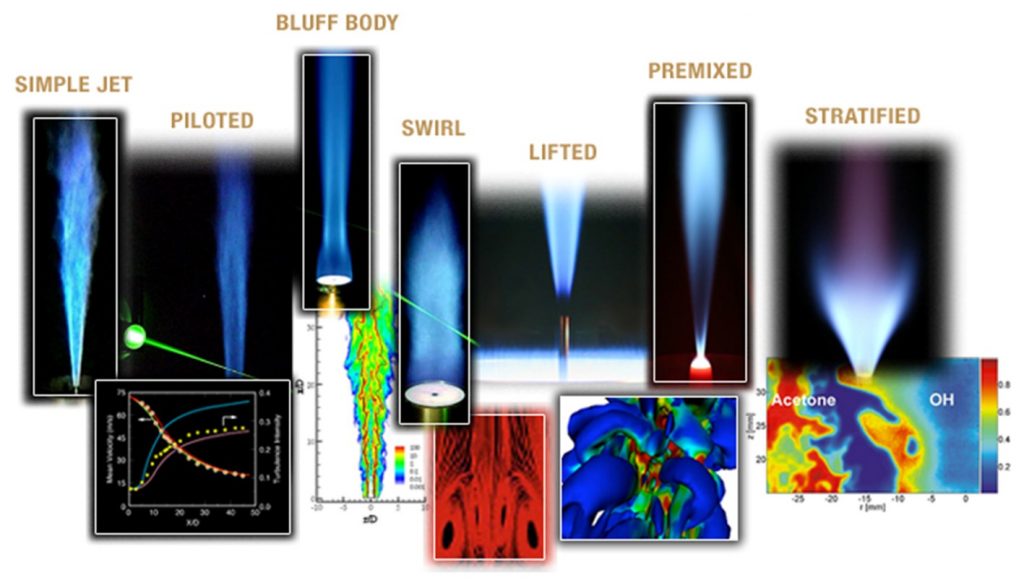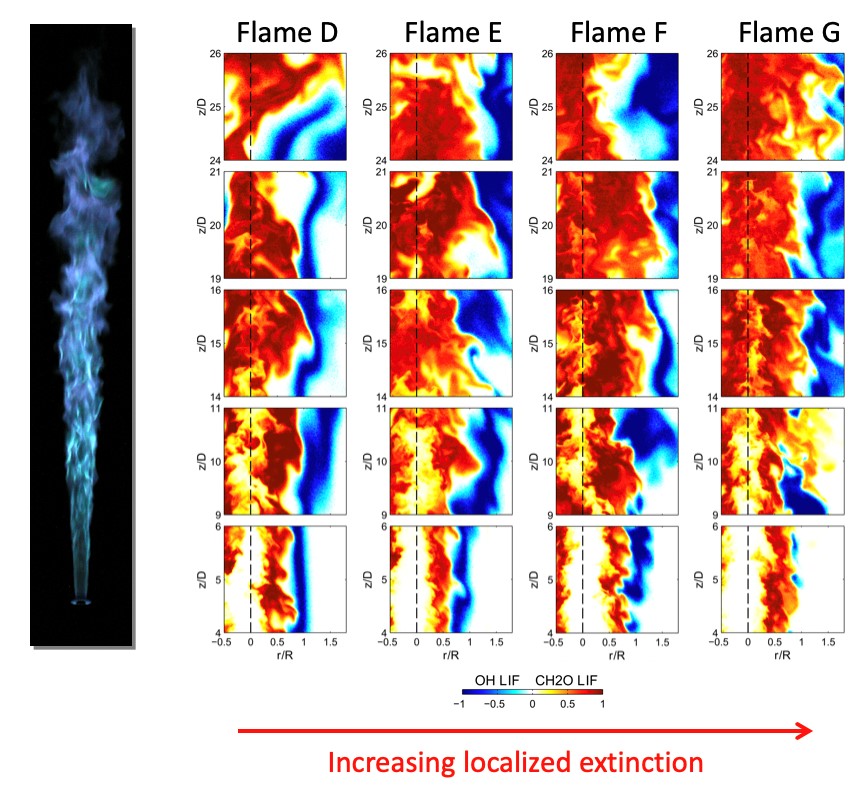
Experimental turbulent combustion research is focused on revealing and understanding the interactions between fluid dynamics, molecular transport, and combustion chemistry in flames. Many aspects of the complex interaction between fluid flow and chemistry can be explored non-intrusively using state-of-the-art laser-based optical diagnostics. Complementary diagnostics are applied to a variety of flames in the Advanced Imaging Research Laboratory (AIL) and the Turbulent Combustion Laboratory (TCL).
The goal of this research is to provide fundamental understanding of transport-chemistry interactions and to accelerate science-based predictive capabilities that can guide design, operation, and fuel formulation for practical combustion devices. Therefore, CRF experimental research is conducted in close collaboration with computational scientists and turbulent combustion modelers at Sandia and around the world. Apparatuses are often designed for fundamental studies of ‘building block’ flows with well-defined boundary conditions, such as unsteady laminar flames, turbulent jet and counterflow flames, and relatively simple flames stabilized by bluff-body recirculation or swirl. The strong coupling among experiment, theory, modeling, and simulation provides a powerful approach to understanding complex combustion processes.

Based on experiments published in (1) Coriton, B.; Im, S.-K.; Gamba, M.; Frank, J. H., Flow Field and Scalar Measurements in a Series of Turbulent Partially-Premixed Dimethyl Ether/Air Jet Flames. Combust. Flame 2017, 180, 40-52, and (2) Coriton, B.; Zendehdel, M.; Ukai, S.; Kronenburg, A.; Stein, O. T.; Im, S.-K.; Gamba, M.; Frank, J. H., Imaging measurements and LES-CMC modeling of a partially-premixed turbulent dimethyl ether/air jet flame. Proc. Combust. Inst. 2015, 35 (2), 1251-1258.
PIs: Jonathan H. Frank, Robert S. Barlow